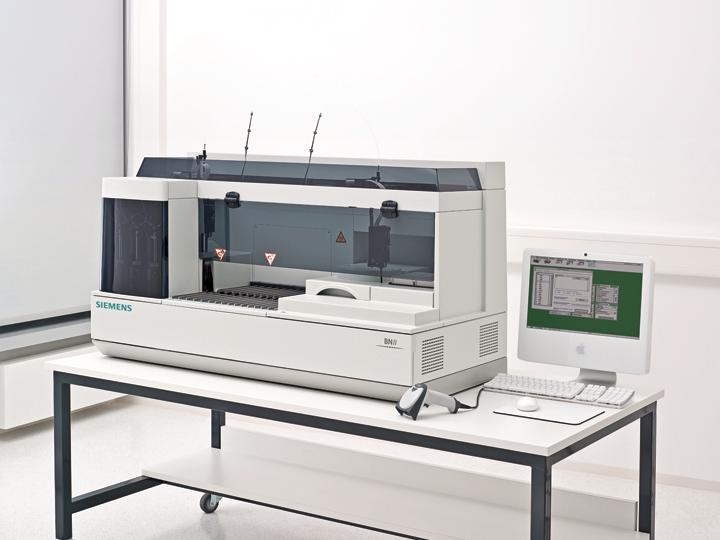As the first dedicated protein analyzer that can be connected to lab automation, the BN™ II System provides flexible options to meet the needs of the mid- to high-volume plasma protein lab. It uses nephelometric technology for protein determination and supports the clinical management of a variety of disease states, such as gammopathies, kidney diseases, neurology, and chronic alcohol abuse.
Increased workflow efficiency:
- Fully automated assay processing: from reading of sample tube bar codes to reporting of results
- Average throughput up to 130 tests per hour*, and its high onboard capacity of up to 100 samples and 35 reagents provides a walkaway time of more than 2 hours
- Wide measuring ranges enable fewer repeats
- User-friendly software facilitates easy operation
- Bidirectional host interface for convenient transfer of assay requests and results to the laboratory information system (LIS)
Flexible, efficient operation
- Continuous loading and reloading of samples and/or reagents without interrupting the system’s current workload
- Random-access processing eliminates sample batching
- Accommodates standard sample tubes as well as micro cups for low-volume samples, such as samples from pediatric patients
Confident, consistent results
- Confidence in results when analyzing samples with extremely high analytical concentrations
- Optimized reaction conditions and assay-specific, automated pre-reaction protocols ensure valid results without operator intervention
- Specimen level detection and positive barcode identification for samples, reagents, standards and controls to reduce human error
Improved workflow efficiency through automation
- Ability to connect to Aptio® Automation and FlexLab Automation solutions
- Interface module transfers sample tubes from the track into the BN II racks and pushes the racks onboard the analyzer
- Reduces manual interaction
- Extends walkaway capability
- Continuous access to reagents and consumables
- Enables manual loading of specialty samples, when needed
Innovative assay menu
- Broad menu available from one source; over 60 assay protocols for management of various clinical indications
- Routine and specialty assay consolidation
- Innovative markers including monoclonal kappa and lambda free light chains (FLC), cystatin C, beta-trace protein (BTP), and carbohydrate-deficient transferrin (CDT)

